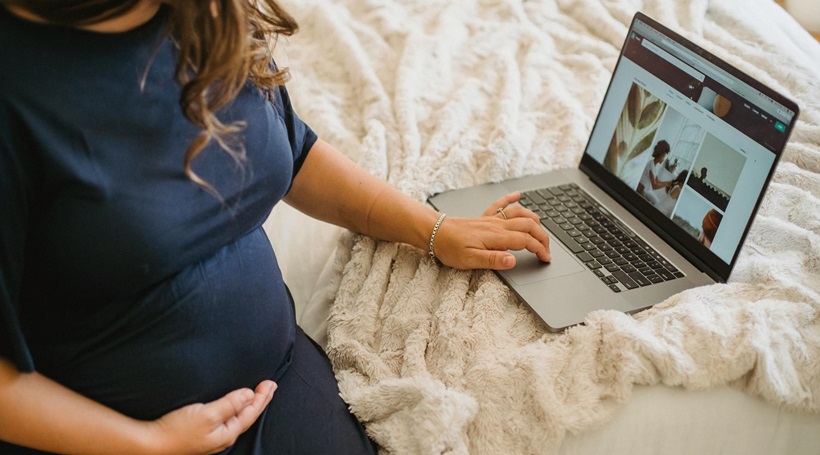Last Updated on January 1, 2025
The arrival of a new baby is an exciting and joyous time. After a long haul of nine months, your little bundle of joy will finally be in your arms. Having a baby, however, can be a costly affair. The endless supply of cute onesies, toys, diapers, and childcare can add up to $12,680 in the first year.
As parents, you would want to shower your newborn with the newest and best of everything. We understand that. But budgeting beforehand is important. Otherwise, you’ll end up spending way more than you should.
In this article, we’ll share a few practical tips to help you save money when you have a baby.
#1. Say No to Hospital Add-Ons
Before you go into labor, analyze the hospital fees and hidden charges. The Peterson-Kaiser Family Foundation (KFF) Health System Tracker has revealed that $18,865 is the average cost of childbirth in the U.S. That’s way too much money.
Your health insurance will cover most of the cost, but what if you don’t have one? You will have to pay a hefty sum. To save on your hospital bills, resist the temptation of unnecessary add-ons.
Hospitals often offer optional services that can significantly inflate your bill without providing essential benefits. These add-ons may include luxury birthing suites, upgraded accommodations, or additional services such as gourmet meals or photography packages. You can save a reasonable amount by saying no to these add-on services.
#2. Give Nursing a Go
Mothers have two choices when it comes to feeding their newborns—breastfeeding or formula feeding. The AAP, or American Academy of Pediatrics, recommends mothers exclusively breastfeed their babies for the first six months. You’re free to choose either. But breastfeeding offers numerous benefits, both for your baby’s health and your wallet, so it’s best to go for that.
Breastmilk will supply your baby with all the nutrients they need to grow into a healthy being. It has antibodies that will protect your little one from infections. Moreover, breast milk is entirely cost-free since you don’t need any feeding supplies.
If you decide to formula-feed your baby, expect to spend between $821.25 and $2,920 on formula alone in the first year. Add a few hundred dollars to it that you will have to spend on bottles, teats, and a bottle warmer. But you can save money by breastfeeding your newborn from the get-go.
You can also combination feed your baby if you can’t feed them breast milk all the time. You will still save a good sum.
#3. Don’t Shy Away From Secondhand Goods
Your love for your baby would convince you to buy new and often expensive items for them. After all, your little bundle of joy deserves nothing but the absolute best.
Babies, however, grow way too fast. Beanstalk Children’s Resale notes that toddlers outgrow their clothes and shoes quickly. Those things will be rendered useless after a few months—or, let’s say, a year.
Why not go easy on your wallet and shop secondhand? This is a savvy strategy to cut back on baby essentials expenditures while providing your little one with everything they need.
In Portland, Oregon, for instance, the cost of living exceeds the state average by 10% and surpasses the national average by 20%. Clothing in the city costs about 6% more than it would in other states. Buying brand-new clothes for your little one could easily push you over budget. Instead of scouring stores that sell unused clothes, check out any children’s store in Portland, Oregon, that deals in pre-loved items.
You’ll find gently used clothing, toys, and other items at children’s stores. These stores often offer an excellent array of secondhand goods that can significantly cut costs. You will find pre-loved baby items, including essential gear like strollers and high chairs, often at half the original price. You can even find high-quality brands and products that might otherwise be out of budget if purchased new.
Online marketplaces and community yard sales are also treasure troves for gently used baby clothes, gear, and toys.
#4. Skip the Fancy Nursery
It’s natural to want to create a cozy and beautiful nursery for your little bundle of joy. But that will cost you a fortune. Save your hard-earned money by skipping the fancy nursery and focusing only on the essentials. Your baby won’t even notice the expensive decorative extras that you put in this room.
When designing your little one’s nursery, start with the basics. Buy a safe crib, a comfortable mattress, and bedding. These will keep your baby safe while ensuring maximum comfort.
Similarly, avoid splurging on designer furniture. Opt for budget-friendly, durable pieces that serve multiple purposes. For instance, get a dresser that doubles as a changing table.
You should also decorate the nursery with minimal, cost-effective touches. DIY artwork, wall decals, or simple paint will transform the space without a hefty price tag.
To sum things up, having a baby doesn’t have to drain your bank account. You can provide for your growing family while staying within your budget. Hence, implement these cost-effective strategies, and you will save considerable amounts while providing the best for your little one.
When you follow all these, you’ll find that raising a happy, healthy baby is entirely feasible within a budget.

